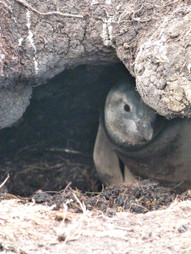The Falkland Islands
- phaines2
- Feb 12, 2017
- 2 min read
Updated: Jun 19, 2020
February 12th: The Falkland Islands The Falkland Islands, and their capital, Stanley. Cavan and I had elected to take a wander around the town, and then take another trek into the countryside. Stanley is fascinating. It possesses a Brigadoon kind of vibe. Indeed, lost in time and lost in space seems to sum up the situation. It’s the only place I’ve encountered where Margaret Thatcher is regarded as a saint – her hagiography ranking up there with Joan of Arc (who was probably equally unpopular in other circles). Britain still rules the waves. Pubs endorse all things British, and the sooner HRH the Queen and the rest of her whanau immigrate, the happier everyone will be. I had expected dank bleakness, or else cutesy pubs. In fact it was neither. Helped by the extraordinarily fine weather that has followed our cruise, this was a thoroughly pleasant place to visit. The town was small, and represents 9 generations of Falklanders – always remembering the reality that the brightest and best go home to Blighty to gain formal professional qualifications, then returned after 8 – 10 years away to settle and work on the island. And it seems that the majority do choose to return. The scenery is empty, scrub covered, rolling hills. Most of the land we encountered was held in common, or ‘common land’. There’s a charming medieval quality to the place. Memories of the Argentine invasion are everywhere. As our guide remarked – the Argentinians held the high land. How could they lose? But, they did. And both countries have been left to count their dead. Pubs flaunt RAF flags, and display tags supporting Britain. How does this relate to the new Britain and Brexit? Who knows what it means for these islands. On a less contentious note, we walked around the coast looking for wildlife. There were dolphins, geese, seabirds and, the creme de la crème, Magellan Penguins. They occupied a couple of beautiful beaches – from which we were banned because they were mined during the Argentinian war. Warning signs were everywhere. I believe this is a magical approach all conservation organisations should learn from. Stick these signs up everywhere. If necessary, install a couple of overtly placed mines to scare people off. This allows humans to view animals at a distance, photographing them through long distance lenses (mine is crap), but ensuring no one can get close enough to menace to the animal’s peaceful way of life. Tomorrow is a sea day, and a good opportunity to catch up with Spanish vocabulary, sleep, and, in my case, the much anticipated and dreaded, hair cut and colour.

.png)




























































Comments